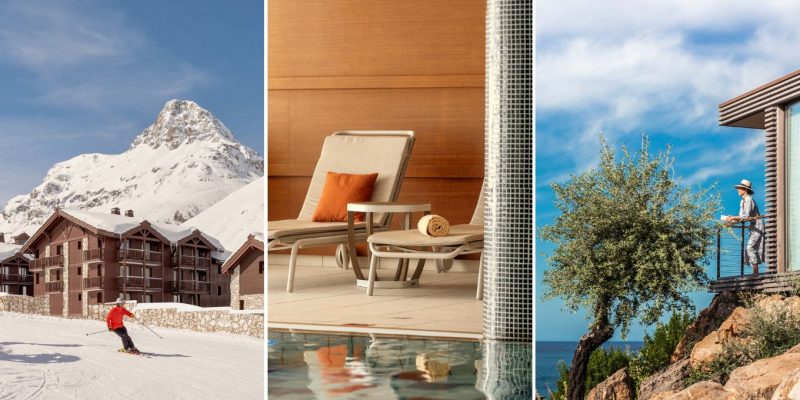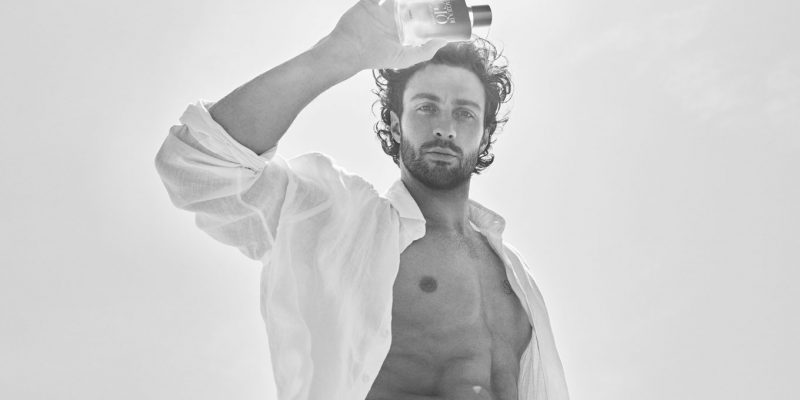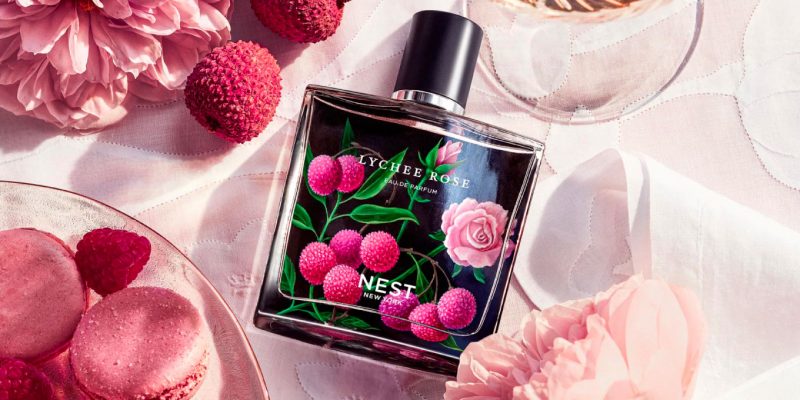Fragrance
The Beauty Visionary Set On Reinventing The Fragrance Industry
“The fragrance industry is still so old fashioned."
by : Sarah Daniel- Nov 26th, 2019

As climate change and plastic pollution continue to make headlines, holiday shopping is in full swing, making those of us aiming to live more sustainably year round conflicted about how to stick to that plan come December. And if you’re one of the many people who gift family and significant others fragrance (21 percent of total fragrance sales, including gift sets and home scents, happen in the last month of the year, says Alecsandra Hancas, of The NPD Group) finding a planet-friendly perfume can feel a little like looking for kale chips at a cookie swap. Because while many skincare and makeup brands have been moving toward using less packaging or more environmentally-sound materials, most fragrances still come in cello wrap-sealed large boxes with cardboard inserts, and no directions on what to do with the bottle after the last spritz.
Which is why Floral Street feels so refreshing. The British fragrance brand has been winning awards for its forward-thinking compostable and reusable packaging, which is basically a chic egg carton fastened with a reusable hair elastic. Its lineup of vegan scents ($99 for 50 mL or $34 for 10 mL at Sephora) with unconventional names and scent combinations like Electric Rhubarb and Ylang Ylang Espresso, also feature sustainably sourced ingredients.
This fall, founder and cosmetic industry oracle Michelle Feeney was in Toronto to talk about creating her own brand from scratch (after helping to turn others like La Mer, M.A.C and St. Tropez into household names), and why the fragrance industry needs a reboot.
ON BEING A BEAUTY VISIONARY
“I have more than 30 years of experience in the beauty industry. I started my career in London in the eighties working at Lynne Franks’ PR firm. (If you’ve watched Absolutely Fabulous that show was based on us.) I moved to New York in 1990, and my first client was Bumble and bumble. It was in a bit of a decline; it had a very old fashioned logo and so I changed it to the signature that you see today, and worked with Orlando Pita to develop products in recyclable bottles. Then I was headhunted by Estée Lauder Companies where I worked on a brand called Prescriptives, which was the leading beauty brand in the nineties. It was very edgy, and had excellent formulations. There was a saying in Lauder at that point: Good work is rewarded with more work, not necessarily more money. So I was asked to work on launching the Tommy Hilfiger fragrance globally. Then the president gave me this little pot of cream and said ‘can you do something with this?’ It was me and one other person on what would eventually become Crème de La Mer. I delved into the story of Max Huber, and it became a phenomenon. We had to scramble to keep up with production, and I came up with the idea of a waiting list in Saks Fifth Avenue because we just didn’t have enough product.”
ON SOCIAL RESPONSIBILITY IN BEAUTY
“[Estée Lauder Companies] told me about another brand they were going to buy, and that was M.A.C. John Demsey and I practically lived in Toronto. The M.A.C store was in Cabbagetown and the offices were above. We launched in 40 countries, and it taught me that beauty can do genuine good. I knocked on the door at the United Nations and said ‘can we give some money to help with HIV/AIDS in Africa?’ I ended up sitting on a board in the United Nations. We gave a cheque to [then Secretary-General] Kofi Annan, and had Mary J Blige perform there. It was one the highlights of my my life.”
ON CREATING FLORAL STREET
“I used to have a lot of business meetings at a particular spa, and one day I looked up and realized it was on Floral Street, and I thought ‘that’s a great name for a fragrance company.’ So I registered it globally for beauty. I didn’t want to take the idea to somebody else. And I then met Bernadette Jackson, who’s head of product development, and we literally sat around my kitchen table for a year and created the brand. We did it all from mood boards. I’m not a nose, but I had an idea for the brand. I wanted it to be about bunches of flowers not bouquets, which is very British; you pick your flowers and wrap them in brown paper. Our flagship is in Covent Garden, the Victorian flower market. So it has a really nice heritage.
I wanted it to be a real learning center because in the fragrance industry there’s a lack of transparency, the keeping you out, the not telling you what’s in a perfume, and not being open about learning. We have drawers in our stores that hold all the raw materials where you can smell and touch them, and the walls are lined with the lids of our compostable boxes. We call our salespeople Floralistas. Our nose is one of the best in the world: Jérôme Epinette. I call him the Sam Smith of perfume because he’s created all these hits for brands like Byredo, and he’s won awards from the Fragrance Foundation. He’s from the fragrance house Robertet. We went with them because they have the largest library of natural ingredients, and on their website they even tell you when their ingredients were harvested. I wanted this openness for the consumer.”
ON MARKETING A MODERN FRAGRANCE
“The fragrance industry is still so old fashioned. Even the commercials: clothes falling off, and guy gets girl or girl gets guy. When we went to the FiFi Awards in the U.S., Amy Schumer was presenting, and she asked why the model in fragrance ads is always running? Running from somewhere, running to somewhere, usually a big body of water. In all of the words we use to describe our fragrances, we do not use ‘sexy’ anywhere. I think it’s an old fashioned word. I’m not saying you don’t want to experience that feeling, but I think there’s much better words we can use to describe how we’re feeling, and also how fragrance is expressed.”
ON CREATING SUSTAINABLE PACKAGING
“My husband asked ‘what on earth are you doing putting such a beautiful bottle in something like this,’ but people are loving it. To create our box, we worked with an 180-year old paper mill in the north of England who’ve gone into pulp production. All of it is sustainable. You can reuse it. It actually composts so you could also grow things in it if you wanted to. When you say something is recyclable, you’re counting on the consumer to recycle. Whereas our box will just compost.”
ON GREENWASHING
“We are cruelty-free and vegan. These credentials are not easy to come by. And I do feel at the moment that a lot of brands and retailers are really bamboozling the consumer and hiding behind this clean idea. Because the consumer thinks that means a lot more than it actually does. And it doesn’t necessarily refer to packaging. So I think we’re going to hopefully see a lot of uncovering of that over the next few years. I think you’re also going to see a lot of information coming forward about how ingredients in beauty are sourced. There are a lot of people telling stories that when you uncover them a little bit they’re not quite what they seem.”
Newsletter
Join our mailing list for the latest and biggest in fashion trends, beauty, culture and celebrity.
Read Next

Fashion
H&M's Latest Designer Collab With Rokh Just Dropped (And It's So Good)
We chatted with the emerging designer about the collaboration, his favourite pieces and more.
by : Melissa Fejtek- Apr 18th, 2024

Culture
5 Toronto Restaurants to Celebrate Mother’s Day
Treat your mom right with a meal at any of these amazing restaurants.
by : Rebecca Gao- Apr 18th, 2024

Culture
Discover Club Med’s Stunning Exclusive Collection
Vacation destinations that bring pure luxury and comfort.
by : ELLE Canada- Apr 8th, 2024




